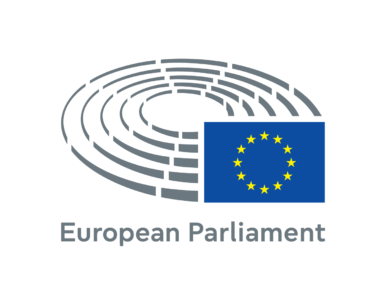by Meredith Baldi & Prescott Seraydarian, George School, United States.
We often measure democratic strength by the amount of votes cast. Indeed, there is cause for optimism in the United States seeing the increase in youth participation, most notably in our recent midterm elections. But democracy is much more than casting a ballot. Voting is only one facet of democratic participation. As educators, we strive to create the conditions for robust civic engagement, so we start by seeding democratic dispositions in our classrooms long before our students come of legal age to vote.
Relationships are the Essence of Democracy
As explained so eloquently by Jeremy Engels (inspired by John Dewey) on the Democracy Works podcast, “democracy starts on the grassroots, in our relationships with other people.” Suggesting that participating in civic life is founded not on voting capacity, but instead in our ability to connect with others. Engels continues by clarifying that the core questions of civic participation are “how do we talk to other people? How do we engage with other people? How do we see other people? Do we welcome other people with different opinions and different voices and different perspectives into the conversation?…How do we listen…?” If we want to teach students how to participate in civic life, we need to, more than anything, help them learn how to connect with others and be interested in others.
COVID-19 and its Impact on Relationships
We teach a high school media literacy class called “Producing Peace: Civic Media Literacy and Production.” In this class, we promote habits of communication that empower students to use media to connect with others to help them develop stronger notions of compassion, empathy and justice. Ironically, our first year of teaching this class was in the fall of 2020, right in the middle of the COVID-19 pandemic. Our school community was reeling, and the students struggling to manage a year of remote learning. It was no easy task to create connections and model productive communication at a time when isolation was public policy. While researchers are still exploring the impact of the pandemic on our social networks, it is well noted that social connection is crucial for happiness and well-being. Prolonged isolation took its toll on our relationships. It does not seem coincidental that in this time of fractured relationships, our democratic institutions are also in crisis.
Media Literacy as a Democratic Disposition
To cope with this unprecedented social isolation, many used media to maintain and create relationships. Noted by Psychiatric Times, youth, who showed notable decreases in mental health and well-being during this time, turned to social media. For some, this was a positive coping mechanism and afforded them important connections and comfort during a difficult time. However, for all the positives, we also saw an uptick in misinformation that exacerbated political polarization in our civic life.
We have to find a way to use the media to foster connection, especially in a world struggling to reconnect after COVID-19, while also navigating the challenges and division it can cause. The stakes are high: we don’t simply need to combat misinformation, we need to recover healthy relationships, and consequently, a healthy democracy.
This is where media literacy comes in. Media literacy can help develop democratic thinking at the grassroots level because its fundamental questions serve human connections and relationships. Media literacy is a powerful tool here for the way it responds to Engels’ call to engage with other people, see them, hear them, consider perspectives other than our own. In our perspective:
- Media literacy makes us curious: Media literacy requires us to ask questions, like “Who made this and why?” These questions shake us out of passive consumption and urge us to question what we are seeing and hearing.
- Media literacy connects us to human intentions: The curiosity spurred by the 5 Core Questions in media literacy don’t just promote analytical thinking, but help us understand the human who created it. What were they thinking? What were they trying to say? Why did they want to communicate this message in this way? What values do they have? How might those values be the same or different than mine? These questions drive home the notion that media is more than a message. Media is a form of communication that humans have to communicate with one another and create connections.
- Media literacy promotes self-awareness: If we want to help students develop connections with others, developing stronger habits within their own self-awareness is equally important. For every media production assignment in our class, our students need to start with a series of intentions: “What is your message and what is your goal?” and “Who is your intended audience?” These questions help direct students towards reflection and intentionality that develop clarity and integrity in their own communication.
- Media literacy encourages connection strategies: The above questions also help students develop awareness of those they are communicating with, working on strategies to make sure their message to that specific audience is impactful. In essence, media literacy helps students develop thoughtfulness and consideration about who is communicating and why, and similarly, reflection and intention about what they want to share (and with who) and why.
Conclusion
If our ultimate goal is to foster more democratic participation in our societies, we should focus on forming the grassroots skills that foster relationships and productive communication. Media literacy needs to be a part of building these democratic dispositions. If we reimagine media literacy not simply as a tool for interacting with information, but a tool to help us connect with, hear, contextualize, and communicate with others, we surely are laying the groundwork for more productive democratic discourse as the foundation of our society.
Authors
Meredith Baldi & Prescott Seraydarian are high school teachers at George School, a Quaker boarding-day high school in the United States. Together they teach an interdisciplinary arts and history course called “Producing Peace: Civic Media Literacy & Production.” This course is framed around the query “How can I use media to improve the world in which I live?”














